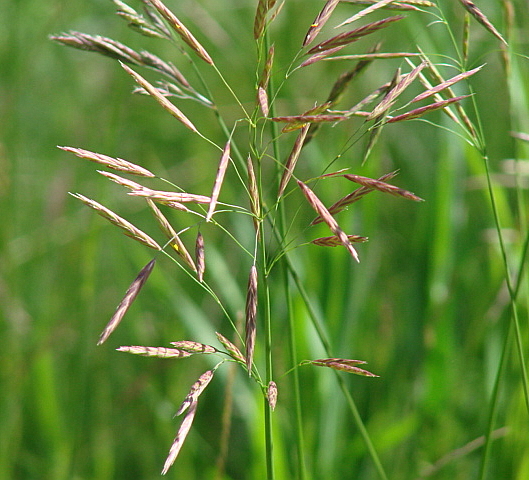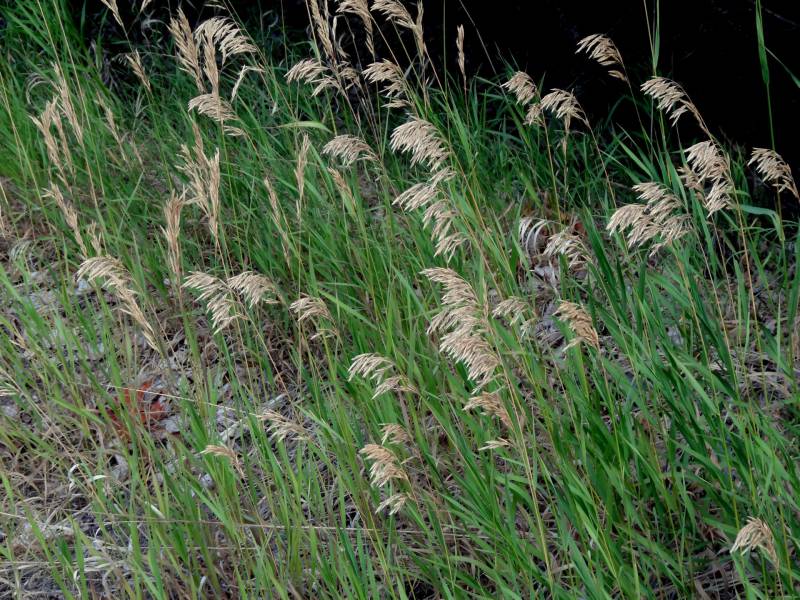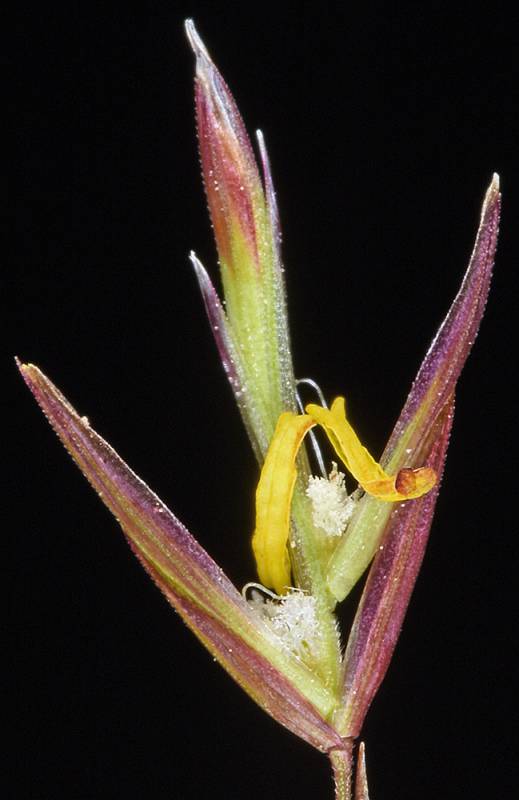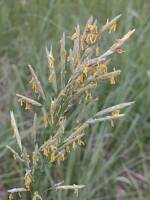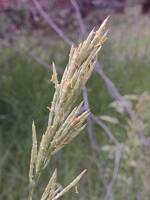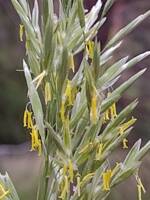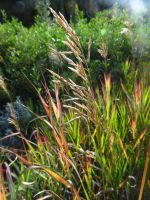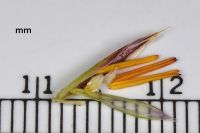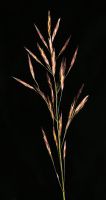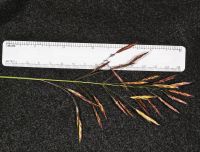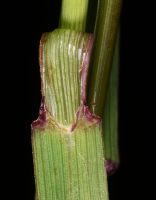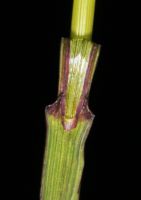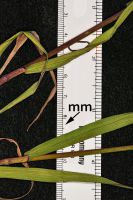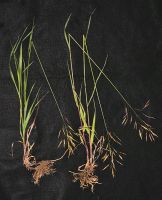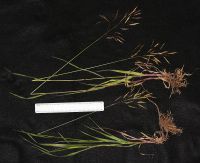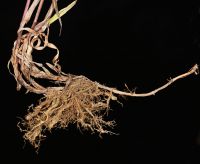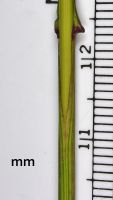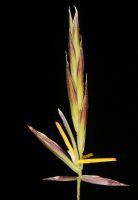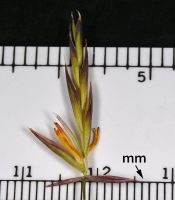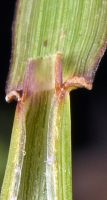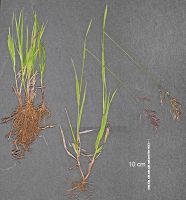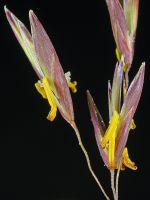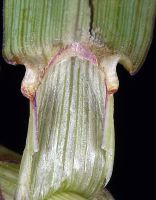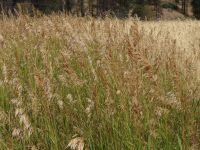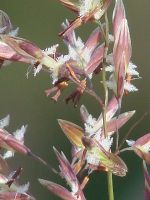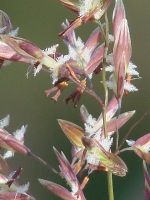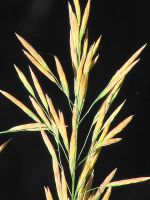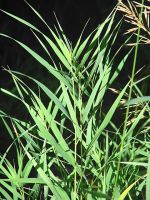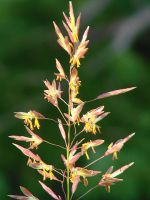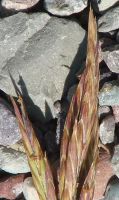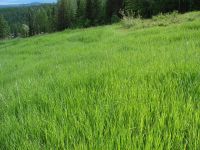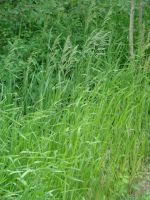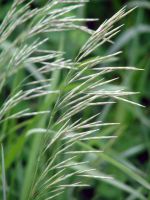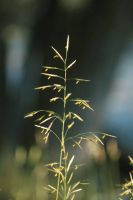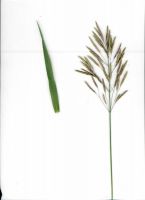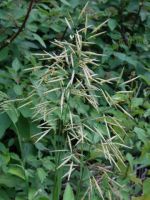Distribution: Occurring chiefly east of the Cascades crest in Washington; Alaska to California, east across North America to the Atlantic Coast
Habitat: Roadsides, fields, ditches, meadows, parks, and other disturbed open areas; often planted for hay and soil stabilization.
Flowers: June-August
Origin: Introduced from Eurasia
Growth Duration: Perennial
Conservation Status: Not of concern
Pollination: Wind
Strongly rhizomatous perennial, the culms 2-12 dm. tall.
Sheaths closed, glabrous or pubescent; auricles usually present, 1 mm. long; ligules 0.5-2.5 mm. long; blades flat, 3-10 mm. broad.
Inflorescence a narrow panicle 7-20 cm. long, the branches ascending; spikelets narrow, tapered from near the base, 5- to 13-flowered, 1.5-3 cm. long, purplish-tinged; glumes with a transparent margin, the first 1-nerved, 4-6 mm. long, the second 3-nerved, 6-10 mm. long; lemmas rounded on the back, obtuse, usually unawned; anthers 3, exerted.
Publication: Fl. Halens. 16. 1761. 1761.
Bromus inermis Leyss. ssp. inermis [HC]
Bromus inermis Leyss. var. inermis
PNW Herbaria: Specimen records of Bromus inermis in the Consortium of Pacific Northwest Herbaria database
WA Flora Checklist: Bromus inermis checklist entry
OregonFlora: Bromus inermis information
E-Flora BC: Bromus inermis atlas page
CalPhotos: Bromus inermis photos

